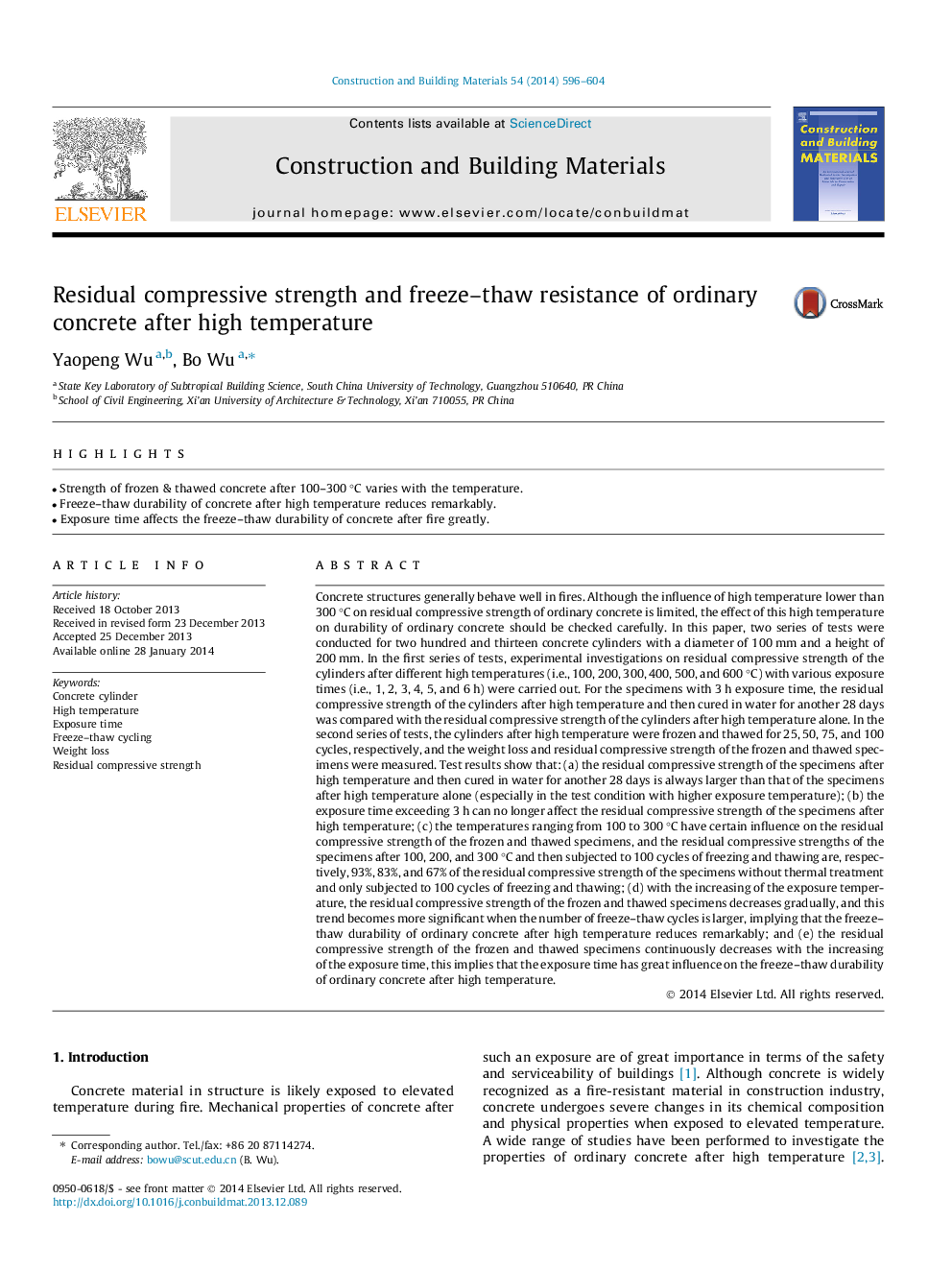| کد مقاله | کد نشریه | سال انتشار | مقاله انگلیسی | نسخه تمام متن |
|---|---|---|---|---|
| 6724049 | 503603 | 2014 | 9 صفحه PDF | دانلود رایگان |
عنوان انگلیسی مقاله ISI
Residual compressive strength and freeze-thaw resistance of ordinary concrete after high temperature
ترجمه فارسی عنوان
مقاومت فشاری باقی مانده و مقاومت یخزدگی بتن عادی بعد از دمای بالا
دانلود مقاله + سفارش ترجمه
دانلود مقاله ISI انگلیسی
رایگان برای ایرانیان
کلمات کلیدی
سیلندر بتنی، درجه حرارت بالا، زمان قرار گرفتن در معرض، دوچرخه سواری یخ زدگی، کاهش وزن، قدرت فشاری باقی مانده،
موضوعات مرتبط
مهندسی و علوم پایه
سایر رشته های مهندسی
مهندسی عمران و سازه
چکیده انگلیسی
Concrete structures generally behave well in fires. Although the influence of high temperature lower than 300 °C on residual compressive strength of ordinary concrete is limited, the effect of this high temperature on durability of ordinary concrete should be checked carefully. In this paper, two series of tests were conducted for two hundred and thirteen concrete cylinders with a diameter of 100 mm and a height of 200 mm. In the first series of tests, experimental investigations on residual compressive strength of the cylinders after different high temperatures (i.e., 100, 200, 300, 400, 500, and 600 °C) with various exposure times (i.e., 1, 2, 3, 4, 5, and 6 h) were carried out. For the specimens with 3 h exposure time, the residual compressive strength of the cylinders after high temperature and then cured in water for another 28 days was compared with the residual compressive strength of the cylinders after high temperature alone. In the second series of tests, the cylinders after high temperature were frozen and thawed for 25, 50, 75, and 100 cycles, respectively, and the weight loss and residual compressive strength of the frozen and thawed specimens were measured. Test results show that: (a) the residual compressive strength of the specimens after high temperature and then cured in water for another 28 days is always larger than that of the specimens after high temperature alone (especially in the test condition with higher exposure temperature); (b) the exposure time exceeding 3 h can no longer affect the residual compressive strength of the specimens after high temperature; (c) the temperatures ranging from 100 to 300 °C have certain influence on the residual compressive strength of the frozen and thawed specimens, and the residual compressive strengths of the specimens after 100, 200, and 300 °C and then subjected to 100 cycles of freezing and thawing are, respectively, 93%, 83%, and 67% of the residual compressive strength of the specimens without thermal treatment and only subjected to 100 cycles of freezing and thawing; (d) with the increasing of the exposure temperature, the residual compressive strength of the frozen and thawed specimens decreases gradually, and this trend becomes more significant when the number of freeze-thaw cycles is larger, implying that the freeze-thaw durability of ordinary concrete after high temperature reduces remarkably; and (e) the residual compressive strength of the frozen and thawed specimens continuously decreases with the increasing of the exposure time, this implies that the exposure time has great influence on the freeze-thaw durability of ordinary concrete after high temperature.
ناشر
Database: Elsevier - ScienceDirect (ساینس دایرکت)
Journal: Construction and Building Materials - Volume 54, 15 March 2014, Pages 596-604
Journal: Construction and Building Materials - Volume 54, 15 March 2014, Pages 596-604
نویسندگان
Yaopeng Wu, Bo Wu,
